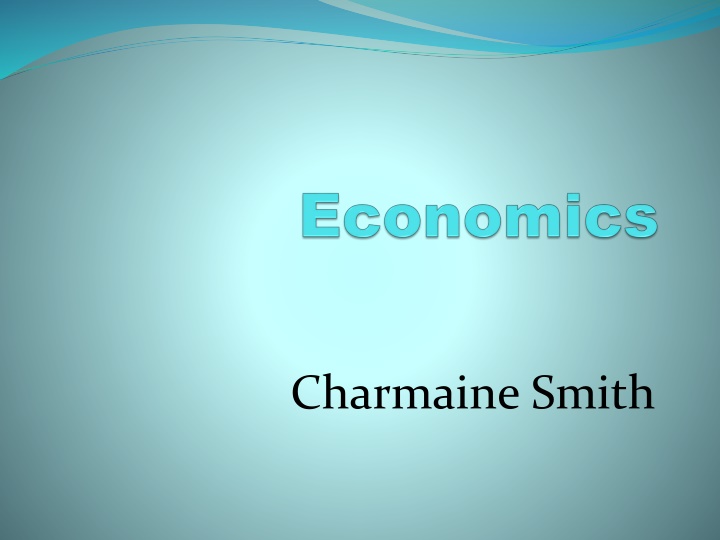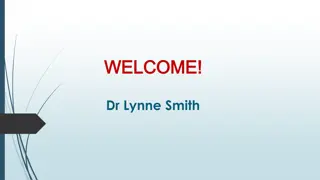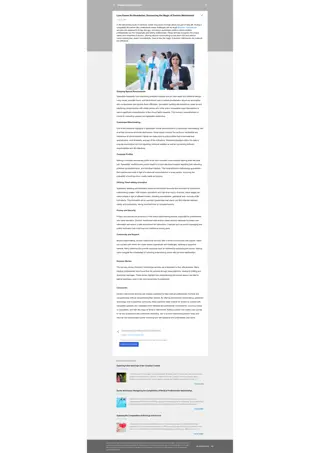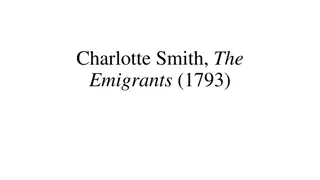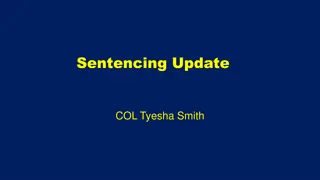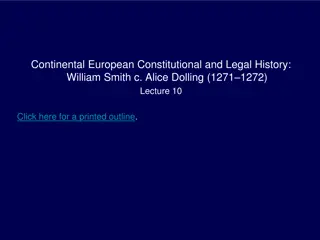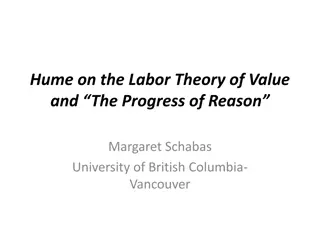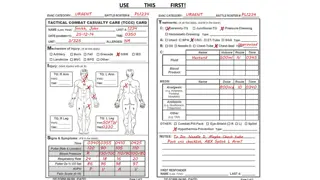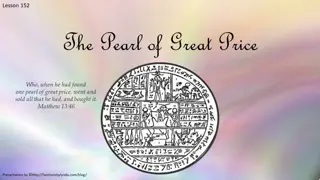Charmaine Smith
The concepts of Balance of Payment (BoP) accounts in economics, including definitions, composition, and recording transactions. Learn how transactions of individuals, firms, and governments impact the BoP and the role of the International Monetary Fund (IMF) in standardizing the accounting process.
Uploaded on Mar 14, 2025 | 0 Views
Download Presentation

Please find below an Image/Link to download the presentation.
The content on the website is provided AS IS for your information and personal use only. It may not be sold, licensed, or shared on other websites without obtaining consent from the author.If you encounter any issues during the download, it is possible that the publisher has removed the file from their server.
You are allowed to download the files provided on this website for personal or commercial use, subject to the condition that they are used lawfully. All files are the property of their respective owners.
The content on the website is provided AS IS for your information and personal use only. It may not be sold, licensed, or shared on other websites without obtaining consent from the author.
E N D
Presentation Transcript
Economics Term 1: Chapter 4 The Foreign Exchange Market and the Balance of Payments Accounts
Economics TOPICS UNIT 1: MAIN REASONS FOR INTERNATIONAL TRADE UNIT 2: THE BALANCE OF PAYMENTS ACCOUNT UNIT 3: FOREIGN EXCHANGE MARKETS UNIT 4: ESTABLISHMENT OF FOREIGN EXCHANGE RATES UNIT 5: CORRECTIONS OF BOP SURPLUS AND DEFICIT (DISEQUILIBRIA)
Economics Lesson 3: Balance of Payments Account Correction of the Balance of Payment
Economics Lesson 3: Unit 2: The Balance of Payments Account
Economics Balance of Payment Account 1. Definition Concepts 2. Composition of the BoP
Economics Balance of Payment Account 1. Definition: Refers to a set of accounts that give a systematic record of outflow of money (import) and inflow of money (export) between a country and the rest of the world during a particular period (quarter or year).
Economics Balance of Payment Account A. Concepts: It includes transactions of individuals, firms and government and covers exchange of goods, services, assets, gifts and all financial claims. The transactions are recorded in terms of the national currency the South African rand (ZAR).
Economics Balance of Payment Account A. Concepts: The International Monetary Fund (IMF) publishes a Balance of Payment Manual on the rules of recording transactions on the BOP account in order to standardise the accounting process.
Economics Balance of Payment Account A. Concepts: Receipts of money from abroad are entered as credits and recorded in the account with a positive sign (+). Payments (or outflows of money) are entered as debits and recorded with a negative sign ( ).
Economics Balance of Payment Account A. Concepts: It works in the same way as the accounting records of a business every transaction is recorded twice; once as a credit and once as a debit. The value of all the transactions must sum to zero.
Economics Balance of Payment Account 1. Definition: A favourable balance of payments usually implies a surplus, which means that more funds are flowing in than leaving. The South African balance of payments is published quarterly in the SARB Quarterly Bulletin.
Economics Balance of payment Account The BoP consist of FOUR sub-accounts: Components: 1. Current account 2. Capital Transfer account 3. Financial account 4. Reserve account
Economics Current Account (difference between inflow out flow of money) 1. Trade Balance (export less imports) a) Merchandise Exports b) Net gold Exports c) Less Merchandise Imports 2. Services Receipts/Payment (import and export services) a) Tourism, Consultancy and Transport
Economics Current Account (difference between inflow out flow of money) 3. Income Receipts/Payment a) Salaries, interest from investments and profits 4. Current transfers a) Transfer of money by private individuals and firms
Economics Capital Transfer Account Records the transfer of fixed and other assets, such as funds by migrants as well as foreign grants to a country e.g. South Africa receiving a grant from a foreign country to combat HIV/Aids or manage Corona. Net Lending to (+) or Borrowing from (-) Rest of The World
Economics Financial Account 1. Direct investment Acquisitions by foreign investors e.g. (property, share capital in firms, taking over of existing firms or starting new firms in South Africa know as Foreign Direct Investments FDI) 2. Portfolio investment Buying paper assets e.g. shares over stock exchange, government bonds
Economics Financial Account 3. Net other investments Other financial transactions not covered by FDI e.g. short term investments that flows in and out of a country, trade credits and short term loans 4. Reserve assets Records the country s holding of gold and foreign reserves, and is meant to correct imbalances.
Economics Activity
Economics Solution
Economics Lesson 3: Unit 5: Correction of Balance of Payments Account
Economics Correction of Balance of Payments Account What is BOP Disequilibrium How to correct it. Lending and Borrowing Change in Exchange Rate Change in Demand
Economics Balance of Payment Account 1. What is BOP Disequilibrium 2. How to correct it. Lending and Borrowing Change in Exchange Rate Change in Demand
Economics Correction of Balance of Payments Account Briefly describe/explain the concepts: corrections and deficit/disequilibria Briefly discuss the different measures to correct the BoP:
Economics Correction of Balance of Payments Account: Explanation Balance of payments disequilibria exist when the outflow of foreign currency continuously exceeds or is less than the inflow of foreign currency.
Economics Correction of Balance of Payments Account: Explanation You will remember that a deficit on the balance of payments implies that the outflow of foreign currency exceeds the inflow of foreign currency while a surplus exists when the outflow is less than the inflow.
Economics Correction of Balance of Payments Account A way to correct balance of payments disequilibrium lies in earning more foreign exchange through more exports and reducing imports. The following are methods that can be used to correct the deficit or surpluses on the balance of payments.
Economics Correction of Balance of Payments Account: Methods Lending and Borrowing Change in exchange rates Change in demand Long term Policies Export promotion Import substitution Interest rates Import controls 1. 2. 3.
Economics 1. Lending and Borrowing Countries with surpluses often lend money to countries with deficits. Countries with deficits often borrow. This is why some developing countries have so much foreign debt.
Economics 1. Lending and Borrowing In the event of a fundamental disequilibrium, member countries may borrow from the International Monetary Fund (IMF). Borrowing is nevertheless not a long- term solution for fundamental balance of payments disequilibrium.
Economics 2. Change in exchange rate Currency depreciation or devaluation makes imports more expensive for domestic consumers and exports cheaper for foreign buyers.
Economics 2. Change in exchange rate For example, when the rand depreciates, South African goods (exports) become cheaper for foreign buyers. Imports become more expensive for South Africans.
Economics 3. Change in Demand The following four instruments are used in various countries to restore the equilibrium:
Economics 3. Change in Demand Long-term policies A. Export promotion, such as government incentives, is applied to encourage the production of goods that can be exported. For example, European countries pay subsidies to farmers.
Economics 3. Change in Demand Import substitution, for example, government give incentives to produce goods domestically rather than to import them. The South African government favours export promotion.
Economics 3. Change in Demand Interest rates Domestic demand can be changed by changing interest rates. If interest rates are increased spending, including on imports, decreases. B.
Economics 3. Change in Demand Foreign traders will try to take advantage by increasing their investment in the country with the higher interest rate. The opposite happens when interest rates are decreased.
Economics 3. Change in Demand Import control They include import tariffs, other duties and quotas. The WTO is trying to phase them out for the sake of trade liberalisation. C.
Economics 3. Change in Demand Exchange control There are domestic regulations that allow central banks to ration foreign exchange. Earners of foreign exchange are compelled by law to hand it over to the central bank. Those who require foreign exchange have to apply to the central bank.
Economics Activity Discuss the methods government can implement to correct the BoP deficit.
